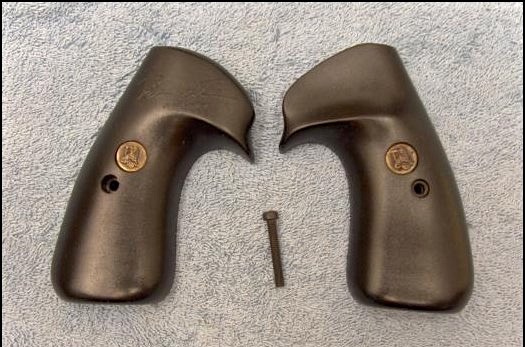Ruger LCRx .38 Special +P with 3 Inch Barrel

The Ruger LCR format has been around for several years and had been a hit with those looking for a feather-weight revolver for self defense or a great packing handgun for the trail. Up until this past year the LCR line-up have all been produced with a 1.875 inch barrel and chambered in .22 LR, .22 Magnum, .38 Special +P and .357 Magnum. In the later portion of last year their new LCRx with a 3 inch barrel began hitting dealer's shelves. For those wondering about the difference between the LCR and the LCRx it is all in the hammer, or lack thereof. The original LCR was produced with a concealed hammer while the LCRx was manufactured with an exposed hammer that allows the shooter to manually cock the hammer and fire the revolver in single-action mode.
The first thing I noticed when I saw this LCRx in the display case were the rubber stocks. Their appearance reminded me of Bill Jordan's Trooper stocks.

Regardless of whether the resemblance is intentional or coincidental the result is greatly appreciated by the shooter. A .38 Special +P can really bark out of a light-weight revolver. But thanks to the Jordan-esque Hogue Tamer grips the bark has no bite. These grips fill my hand and provide a proper reach to the trigger. These may be the best out-of-the box revolver grips I have ever handled. As the name-sake of the grips implies the recoil is greatly tamed.
The second think I noticed when handling the LCRx was the weight. At 15.7 ounces it weighs next-to-nothing. The weight and the Hogue Tamer grips contribute greatly to the appeal of this revolver. The shooting public is always looking for a compromise between light weight hardware and recoil management. The 3 inch LCRx provides this compromise perhaps better than any other revolver on the market today.
The sights on the LCRx consist of a replaceable, pinned front sight with an adjustable rear blade sight.

Adjustable rear sights are not common on small framed 5 shot revolvers. This is a nice touch as it allows the shooter to fine-tune the sights to match whatever load the shooter prefers.
Other specifications for the revolver are height of 5.80 inches, a length of 7.50 inches and a width of 1.28 inches. The LCR series of revolvers also contains a patented cam that reduces friction and stacking when the revolver is fired in the double action mode. The patented cam also practically eliminates "stacking" at the end of the trigger pull giving the shooter one continuous, smooth trigger pull. The double action trigger pull on my revolver came in at 10.11 pounds while the single action was a mere 6.15 pounds.
Once of the features that I have always liked on Ruger's double action revolvers is their push-button cylinder release. I have always preferred this to the forward sliding cylinder release on Smith & Wesson's revolvers as I find the push button on the Ruger to be very precise and intuitive to use.
In terms of accuracy, the LCRx gives proper defensive accuracy as shown in the 21 foot and 35 foot targets shown below:

The 15 rounds shown above and fired at 21 feet all hit center mass and would have quickly ended the attack.

The 10 rounds shown above and fired at 35 feet again would have provided the accuracy and punch needed to stop an aggressor.
One of the challenges to carrying the LCRx 3 inch barreled model is finding a proper holster for it. The tall rib on the top strap and high profile of the sights do not allow this revolver to fit into holsters designed for the SP101 or similar small framed revolvers. After much trial and error I found this DeSantis holster for a Smith and Wesson "L" frame revolver to fit quite nicely.

I prefer revolvers with 3 inch barrels as I find they provide a better balance and offer a little more accuracy than their 2 inch barreled counterparts.
If you're looking for an easy-to-pack revolver that is smaller than a service-sized handgun but still large enough to shoot well then you need look no further than the Ruger LCRx with the three inch barrel.